President Bongbong Marcos' plans and promises: A look back

A little over a year since President Ferdinand "Bongbong" Marcos Jr. took the reins of the government following his overwhelming victory in the 2022 national and local elections, some of his promises and plans for the country have started to take shape -- while others remain in the pipeline as factors such as inflation (5.4% as of June) and the effects of the years-long COVID-19 pandemic continue to affect movement.
With four days before Marcos delivers his second State of the Nation Address (SONA) heralding his second year in office, GMA News Online visits his promises and where they currently stand.
Rice at P20/kilo
The P20 per kilo of rice was among the most popular campaign promises of Marcos during the 2022 elections. As a contender for the highest seat in the land, he vowed to recommend a price cap for rice and task government agencies to serve as middlemen in the procurement of harvests.
Still, more than a year into his administration, P20/kilo rice is still not available in the local markets. Data from the Department of Agriculture has shown that as of July 13, 2023, regularly milled rice at the markets in Metro Manila was priced at P36 to P42 per kilo. Well milled rice can be bought at P40 to P46 per kilo while premium rice is at P42 to P49 per kilo. On the other hand, the special local commercial rice is at P48 to P60, the DA data showed.
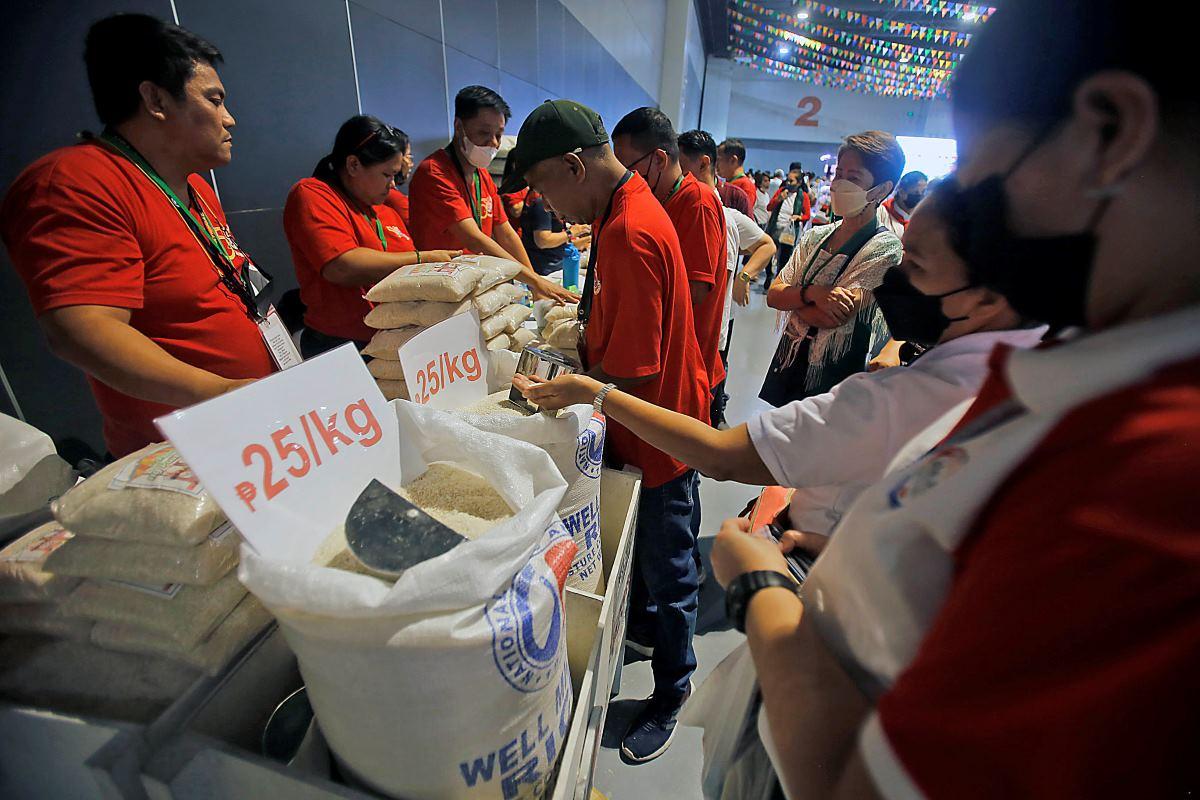
However, one could purchase P25 per kilo of rice in the government-sponsored Kadiwa stalls, which are part of the Marcos administration's efforts to ensure food security and shield consumers from the rise of prices of basic commodities.
In March of this year, a hopeful Marcos pronounced that the government was near achieving this goal for Filipinos. He, however, did not elaborate a timeline for this promise to prosper.
"Makikita ninyo 'yung bigas, ang aking pangarap na sinabi na bago ako umupo na sana maipababa natin ang presyo ng bigas ng P20, hindi pa tayo umaabot doon... dahan-dahan palapit, nasa P25 na tayo, kaunti na lang maibababa natin 'yan," Marcos had said in a speech on March 16.
Marcos, who also sits as Agriculture Secretary, explained before that the P20/kilo price target for rice was hinged on fixing the country's value chain, which is the series of stages involved in producing a product or service that is sold to consumers, with each state adding to the value of the product or service.
In his first SONA, Marcos emphasized that fixing the value chain would address short-term and long-term problems in the agriculture sector, especially the food production and high prices of commodities.
Build Better More
Aside from addressing the issues of the agriculture sector, Marcos also made a commitment to improve the Philippine infrastructure as part of his plans for economic growth.
Marcos said during his SONA last year that the government would allot 5 to 6% of the country's gross domestic product (GDP) for infrastructure projects. The infrastructure projects under the Duterte administration would also continue under his term, he said.
The President said he believes that infrastructure is a "very high priority in our drive for growth and employment." He has been keen on public-private-partnerships in ensuring that the infrastructure plans would come into fruition.
Data from the Bangko Sentral ng Pilipinas showed that there are 194 projects under the high-impact infrastructure flagship projects, which were approved by the National Economic and Development Authority (NEDA) on March 9, 2023.
The NEDA has said that 71 of the projects were from previous administrations, including the ongoing Mega Manila Subway Project approved under former President Rodrigo Duterte and the North-South Commuter Railway, which was envisioned to be the biggest railway project under the late President Benigno “Noynoy” Aquino III.
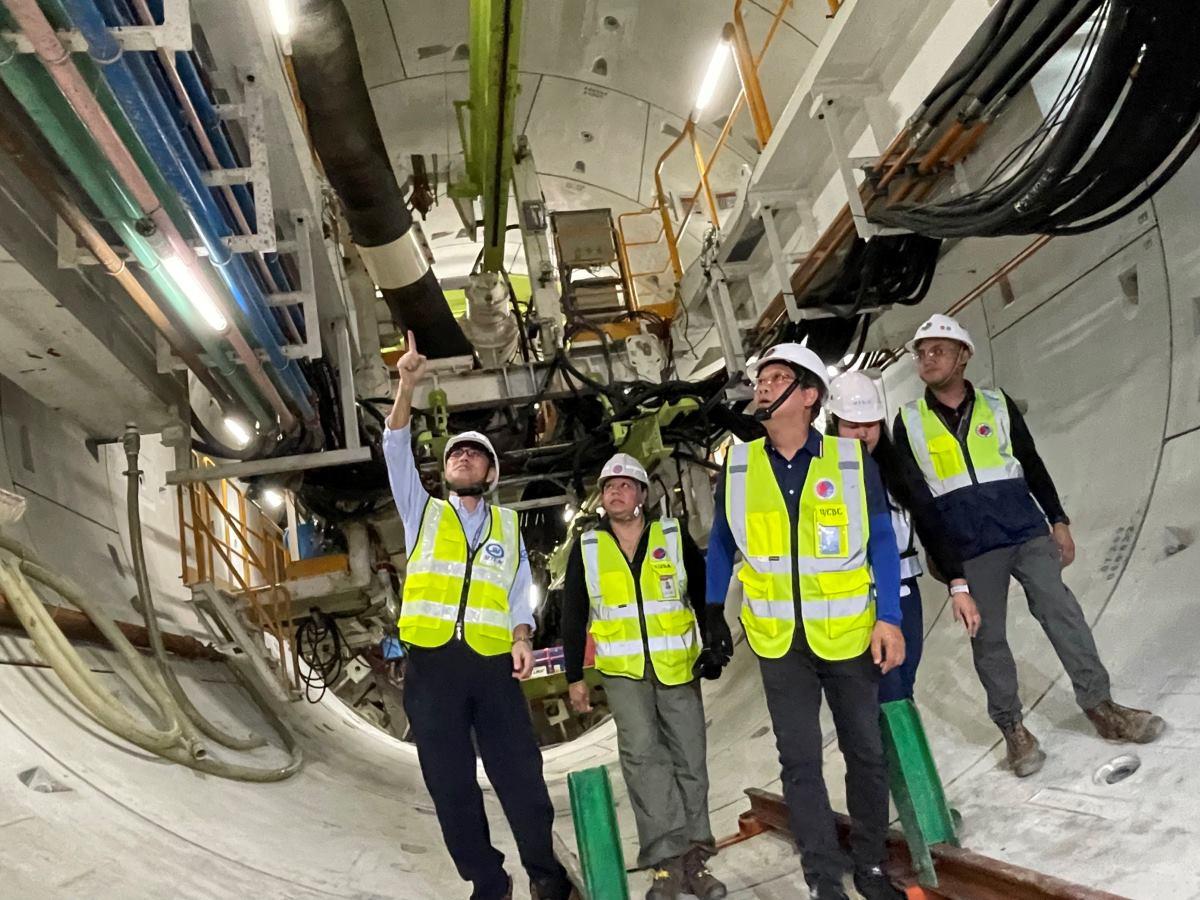
Meanwhile, 123 of the projects on the list were classified as “new,” including the rehabilitation of the Ninoy Aquino International Airport (NAIA), which had two unsolicited proposals from the NAIA Consortium and the Megawide Consortium rejected during Duterte’s term.
These projects are part of the Build Better More program that has placed infrastructure development as the pinnacle of the vision for an equitable, prosperous, and resilient Philippines by 2040.
Records from the Department of Public Works and Highways (DPWH ) also show that 3,280 kilometers of roads and 323 bridges were constructed, maintained, widened, upgraded, and rehabilitated from July 2022 to March 2023.
There were also 1,680 flood control projects accomplished during the said period.
Some of the DPWH's major infrastructure projects include the Central Luzon Link Expressway, Phase I, that was already 97% complete; the P35.7 billion Cavite Laguna Expressway, which is 59% complete; the Bataan-Cavite Interlink Bridge that is 85% complete; and the Samal Island-Davao City Connector Bridge that had its groundbreaking ceremony last October 27, 2022.
Marcos has been calling on the DPWH to ensure that the government's infrastructure programs would be finished on schedule and under its allocated budget. He also tasked the agency to ensure the inclusivity and accessibility of the designs of its projects, adding that the infrastructures should "physically survive" for many years.
Finance Secretary Benjamin Diokno had said the total investment cost of the infrastructure flagship projects was trimmed to P8.2 trillion after the economic team weeded out redundancies.
Tourism 'powerhouse'
As the country's tourism industry reeled from the effects of the COVID-19 pandemic, Marcos, in his first SONA, promised to provide easy access to the country's tourist spots.
"To boost our tourism industry, we will first and foremost make basic developments such as road improvements for easier access to tourism spots. We will also upgrade our airports and create more international airports to help decongest the bottleneck in the Manila airport," Marcos had said.
For this, he approved the National Tourism Development Plan for 2023-2028, which will serve as the blueprint of the Philippines' tourism industry. According to the Department of Tourism, the plan focuses on giving the Philippines a chance to become a "tourism powerhouse."
While the DOT said that 2,470,798 foreign tourists, mostly South Koreans, had arrived in the country from January to June 2023, the Tourism Direct Gross Value Added (TDGVA) shared by the sector to the Philippine economy was estimated at 6.2% for 2022. According to the Philippine Tourism Satellite Accounts for 2022, the TDGVA last year amounted to P1.38 trillion, which was 36.9% higher compared with the P1 trillion in 2021.
The Philippines, moreover, was elected vice president of the 25th General Assembly of the United Nations World Tourism Organization (UNWTO). The country was also voted to be the chair of the Commission for East Asia and the Pacific.
In the midst of these achievements, the tourism sector was recently dragged into a controversy after it was found that a video used for the "Love the Philippines" tourism campaign had used foreign stock footage.

This prompted the DOT to sever its contract with DDB Philippines—the advertising firm behind the country’s new tourism campaign. The agency admitted using non-original stock footage in its audiovisual presentation on the Philippines' new tourism campaign.
Despite the flak the enhanced tourism campaign had gained, Marcos still trusts DOT Secretary Christina Frasco, saying that the latter knows what to do to address the mess.
Ending bureaucratic processes
During his first Cabinet meeting as President, Marcos tasked members to streamline the processes of their departments as he also gave the officials "free hand" in handling the agencies.
"We are also trying to streamline the government so its function is better, its function is much more efficient and more... easier for the public as they have to do business with the government... that it is easier and simpler, and safer, and more secured to do...." Marcos had said.
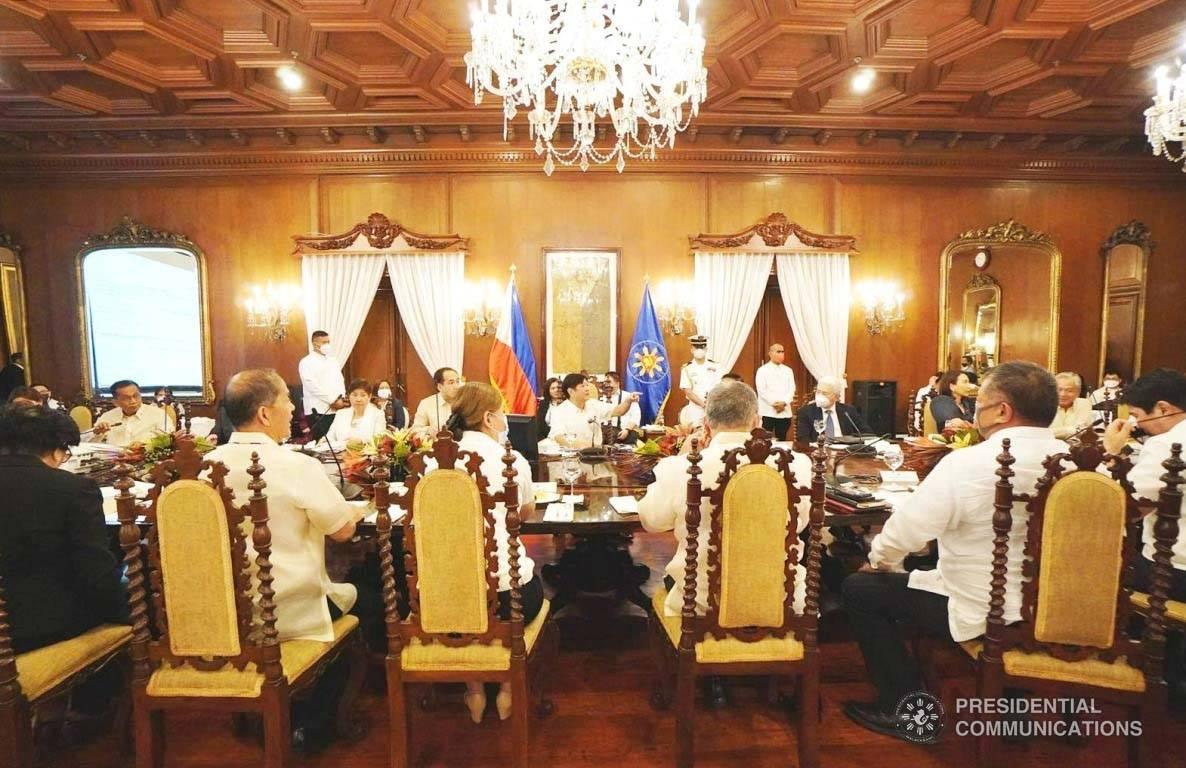
Marcos also vowed to improve the ease of doing business in the country to help attract more foreign investors. Just recently, he signed Executive Order No. 18, which created green lanes in government offices in order to promote the Philippines as a "top investment destination."
According to Marcos, foreign investors were adversely affected by the complicated processes, especially when getting business permits, thus the need for green lanes.
Under the green lanes, the electronic submission of applications for and the issuance of clearances, permits, payments, certifications, among other documentary requirements, would be enabled.
Further, eradicating these complicated bureaucratic practices will also put an end to corrupt practices and misconduct in government agencies.
Energy, power supply
In his first SONA, Marcos said his administration will put a premium on the use of renewable energy sources as part of his government’s agenda to ease the impact of climate change.
“The use of renewable energy is at the top of our climate agenda. We will increase our use of renewable energy sources such as hydropower, geothermal power, solar, and wind,” he had said.
“We must build new power plants. We must take advantage of all the best technology that is now available, especially in the areas of renewable energy.”
As early as November of last year, the Philippines allowed the 100% participation of foreigners in the exploration, development, and utilization of the country’s renewable energy through the amendment of a a section of the Implementing Rules and Regulations (IRR) of the Renewable Energy (RE) Act of 2008.
The Department of Energy also set a target of 35% share of renewable energy in the country’s energy mix by 2035 and increase it further to 50% by 2040.
At present, the Philippines relies heavily on coal — the highest contributor to the power generation mix at nearly 60% — while renewable energy contributes only over 20% to the energy mix.
Marcos also highlighted the country’s potential for both offshore and on-shore wind power generation as well as solar power.
An interest from foreign players in the field of offshore wind are getting traction, with Danish firm Copenhagen Infrastructure New Markets Fund (CINMF) signing three offshore wind (OSW) service contracts (SCs) with the DOE to develop a combined 2,000 megawatts (MW) of wind energy capacity across five provinces.
Spanish wind energy developer BlueFloat Energy, meanwhile, is planning to build offshore wind farms with a combined capacity of 7.6 gigawatts (GW) on four sites in the Philippines as it bets on the country's renewable energy potential.
For solar power, the DOE awarded six solar energy operating contracts (SEOCs), with a combined capacity of 610.5 megawatts, to SunAsia Energy Inc. and its Singapore-headquartered partner Blueleaf Energy for the development of large-scale floating solar facilities on the surface of Laguna Lake.
The DOE’s second round of Green Energy Auction (GEA 2), meanwhile, generated a total of 3,440.756 MW of renewable energy capacities committed for development and installation for the years 2024, 2025, and 2026 at “competitive prices.”
More than half of the winning capacity committed is from ground-mounted solar with a total of 1,878.982 MW while 9.390 MW, 90 MW, and 1,462.384 MW are from rooftop solar, floating solar, and onshore wind, respectively.
The GEA is being undertaken by the DOE to facilitate investments in renewable energy in a bid to achieve the target of 35% renewable energy in the energy mix by 2035 and 50% by 2040.
The program seeks to ensure competitive selection of firms to obtain rights to develop renewable energy capacity.
Marcos also said that “natural gas will hold the key,” while the country develops its renewable energy capacity.
In May, Marcos signed the renewal agreement for the Malampaya Service Contract 38 (SC 38), allowing the continued production of the gas field for another 15 years.
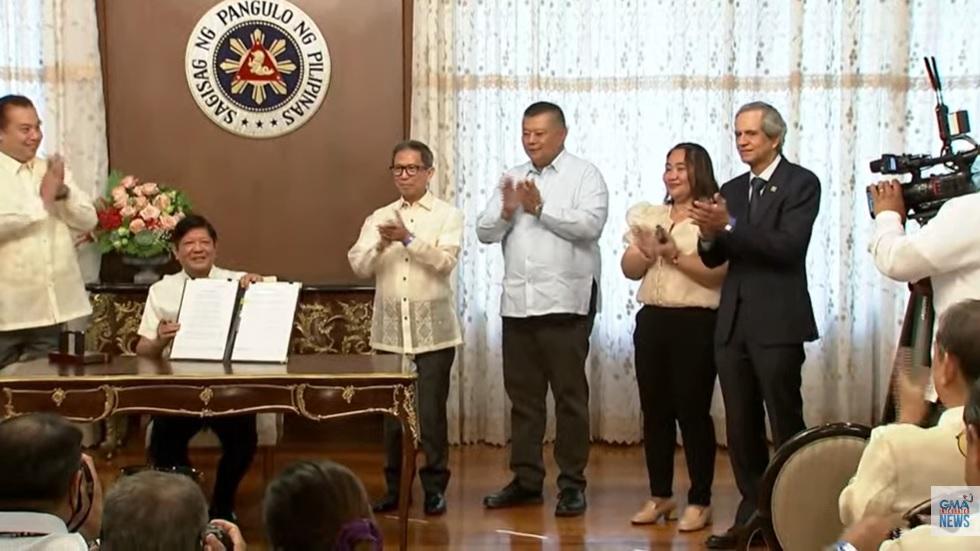
He also expressed belief that it is already time to re-examine the country's strategy towards building nuclear power plants.
In March, Marcos said he was considering "cutting-edge" micro nuclear fuel technology as part of the measures to address the power crisis in the country.
Energy Secretary Raphael Lotilla had said that the country’s foray into nuclear power generation is seen as happening "within the decade" as the agency is working on studies such as the sites where to put nuclear power plants as well as the regulatory framework for nuclear power generation.
Marcos also had said that private-public partnership “will play a part” in the country’s entry into nuclear power generation. Lotilla said the agency is working with the NEDA on the enabling policy framework for private sector participation in the nuclear power space.
“Furthermore, we must examine the entire system of transmission and distribution for the purpose of finding ways to lower the price of energy to the consumer and to industry,” Marcos said.
The National Grid Corporation of the Philippines, the sole operator of the country’s power transmission system, has recently been a subject of a series of congressional inquiries due to performance issues and delays in completion of critical projects.
The NGCP defended itself and pointed the delays to permitting and securing right-of-way. The grid operator also called for better and proper system planning following the recent incidents of power outages that hit the Luzon grid and Panay Island.
Marcos pointed out the need to "expand the network of our transmission lines while examining schemes to improve the operation of our electrical cooperatives. All this in aid of reducing energy cost especially but not limited to households."
The NGCP has committed to finishing key transmission projects such as the Mindanao-Visayas Interconnection Project, the Cebu-Negros-Panay Interconnection Project, and the Bataan/Hermosa-San Jose Line within the year.
Tax system
Marcos said in his SONA last year that the administration reforms will be in place to increase revenue collection.
"Our tax system will be adjusted in order to catch up with the rapid developments of the digital economy, including the imposition of value-added tax on digital service providers,” Marcos had said.
On the proposed VAT on digital transactions, several bills in both the Senate and the House of Representatives have been filed in the 19th Congress.
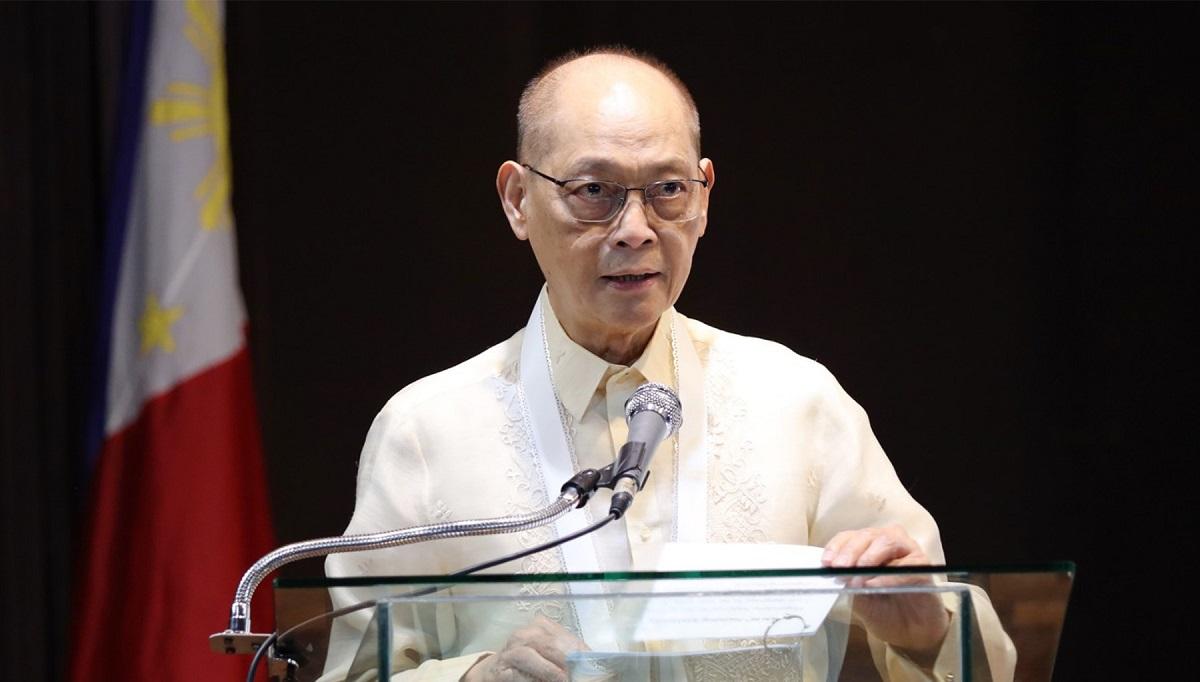
Marcos’ chief economic manager, Finance Secretary Benjamin Diokno, has been vocal in proposing for the imposition of “correct” taxes on streaming service payments and other digital transactions as a way for the government to earn additional revenues.
The Finance chief earlier said the proposal to tax digital services is being made “on the basis of fairness” as digital transactions had the tendency to “evade” imposing taxes unlike purchases made over-the-counter.
The Finance Department is projecting P145 billion in additional revenues if the government will impose the 12% VAT on digital transactions from 2024 to 2028.
Meanwhile, the Bureau of Internal Revenue (BIR) is planning to impose a creditable withholding tax of 1% on the partner-merchants of online platforms as “the proliferation of online sales transactions through the facilities of online platform providers, there is a need to take advantage of the opportunity to identify sellers of goods and services who are therefore obliged to declare their income resulting from these transactions for tax purposes."
Apart from VAT on digital transactions, the administration is also reviewing value added tax (VAT) exemptions in a bid to address inefficiencies and revenue leakages in the tax system.
Diokno has emphasized that under the existing policy structure for VAT — taking into account the existing VAT exemptions and zero rating — the administrative gap computed for 2018 is P546 billion, or equivalent to 3% of gross domestic product.
For his part, BIR Assistant Commissioner Larry Barcelo said the agency cannot impose a tax on non-resident digital service providers (DSPs) as this would lead to inequitable tax treatment between domestic and foreign firms.
Marcos, meanwhile, said that tax compliance procedures will be simplified to promote ease of paying taxes.
As of the first five months of 2023, the BIR surpassed its collection target by P1.331 billion as it collected P1.056 trillion on the back of “tax enforcement activities, specifically on the campaign against sellers and buyers of fake receipts.”
“We will pursue measures to determine possible undervaluation and/or trade misinvoicing of imported goods. Through information and communications technology, the Bureau of Customs will promote streamlined processes,” Marcos said.
Likewise, the BOC collected P434.169 billion from January to June this year, higher by 3.21% or P13.505 billion than its P420.66-billion goal for the period as the agency utilizes its modernization programs and enhanced reform initiatives aligned with Marcos’ eight-point Socioeconomic Program.
Technology advancements
Also during his first SONA, Marcos cited the significant role of the National ID in the digital transformation of the government. He said the government expects to issue 30 million physical IDs and 20 million digital IDs by the end of 2022, and to issue 92 million IDs by middle of 2023.
According to the Philippine Statistics Authority (PSA), some 70.271 million individuals have been registered with the Philippine Identification System (PhilSys) as of June 2023. It said it had delivered 33.422 million physical IDs, and 36.848 million digital IDs.
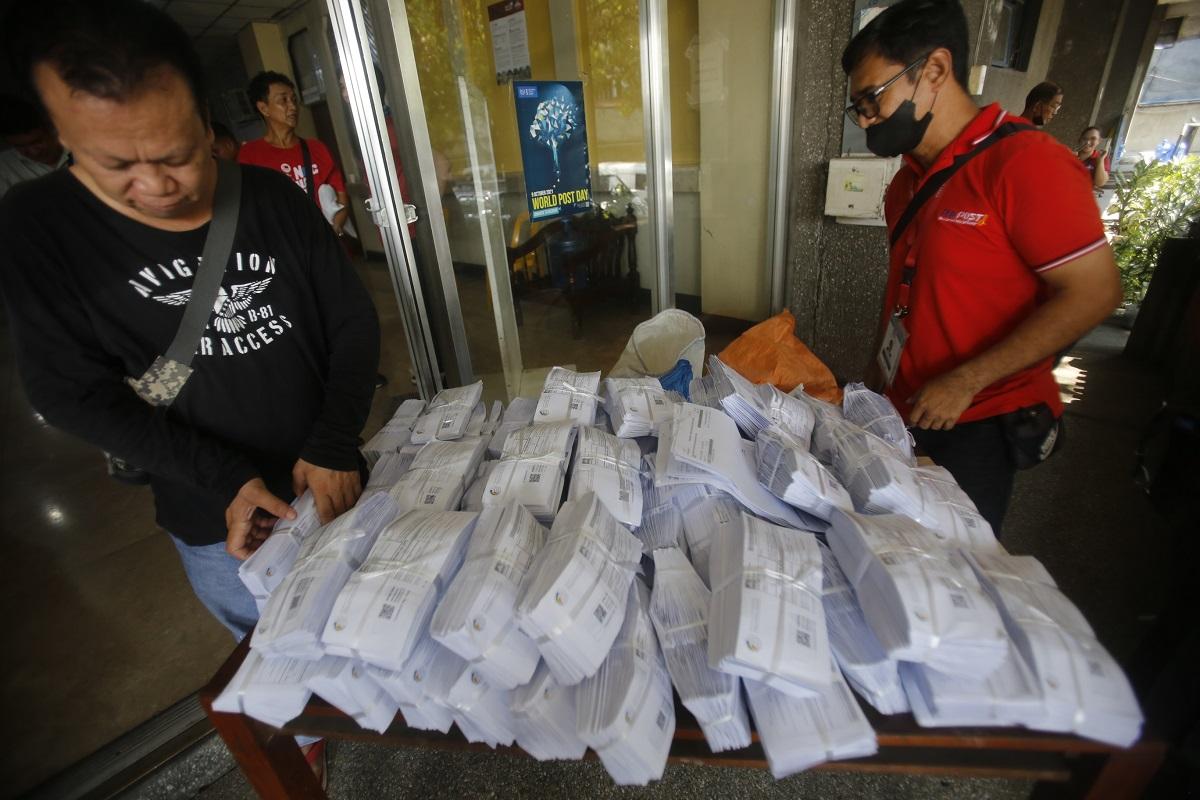
Marcos also pushed for the digitization of government processes, along with the records stored in government warehouses and archives, and the harmonization across departments and agencies. No update on this was readily available from government agencies.
In terms of connectivity, Marcos directed the Department of Information and Communications Technology (DICT) to deploy digital connectivity across various islands in the country.
Phase 1 of the National Broadband Plan — covering the activation of 28 nodes of the national fiber backbone in 23 provinces between Laoag and Quezon — was envisioned to be complete by mid-2023.
Marcos earlier this month also issued an executive order streamlining the permitting process for the construction of telecommunications and internet infrastructure in the country, which was lauded by telecommunications firms.
PH education post-pandemic
Marcos said in his first SONA that a careful review was underway regarding implementation of the Kinder to Grade 12 (K to 12) program of the Department of Education (DepEd). The review has been finished, with a revised curriculum set to be launched soon.
To improve the quality of basic education in the country, DepEd Undersecretary Michael Poa, who is also the department's spokesperson, said the revised K-10 curriculum would focus more on subjects like Math, Science, English, Reading, and Values Formation.
Vice President and Education Secretary Sara Duterte earlier said that the K to 12 curriculum would be revised in a bid to produce more “competent, job-ready, active, and responsible” graduates.
In May, the DepEd organized a national task force that would review the implementation of the senior high school program.
Face-to-face classes
Back in July last year, Marcos disclosed that Duterte was preparing for the implementation of the full face-to-face classes for the School Year 2022-2023 —the first time since the COVID-19 pandemic hit the country in 2020.
The President said he believes that it was time for the children to return to full in-person classes again, but "utmost consideration" was needed for their safety.
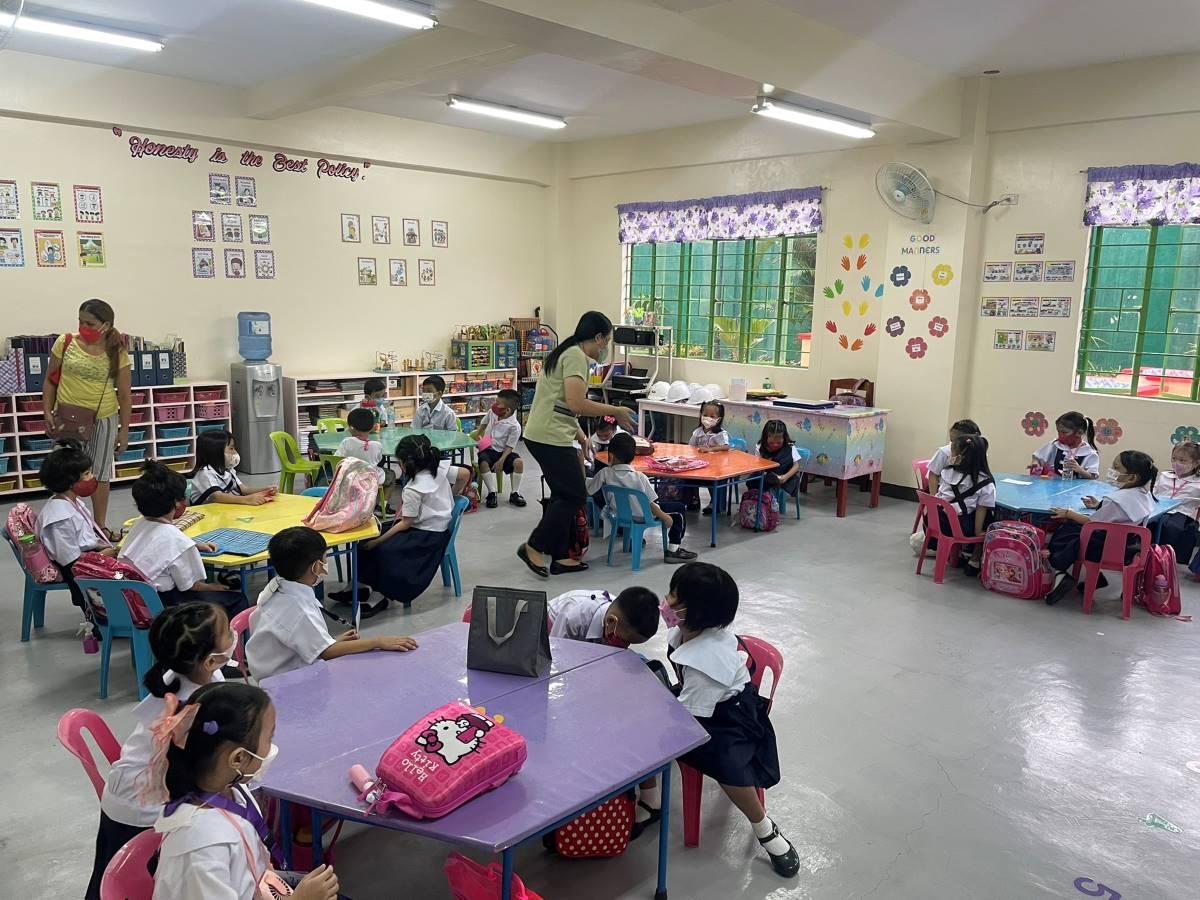
The 100% in-person classes both for public and private pushed through as planned for the recently-concluded academic year. Combined in-person classes and distance learning were allowed from August to October 2022, while the five-day face-to-face classes were mandated starting November of the same year.
Unvaccinated students and teachers were also permitted to attend in-person classes, but they were encouraged to get their primary vaccine series, as well as booster shots. Wearing of face masks in schools also became optional later on after Marcos signed Executive Order No. 7, making wearing of face masks indoors and outdoors voluntary.
However, in October 2022, the DepEd confirmed receiving reports of COVID-19 cases in several schools but said it was “expected.”
Even Vice President Duterte said that these reported COVID-19 infections in schools were a natural consequence of the reopening of the education sector, among others, for face-to-face classes.
Both DepEd and DOH refrained from providing data as to how many learners contracted the coronavirus since full face-to-face classes resumed.
When it comes to the medium of instruction, Marcos had called for a review of English as the country's medium of instruction in order for Filipinos to maintain the advantage of being known as English-speaking people.
DepEd Undersecretary Epimaco Densing III said he also suggested to Duterte making English and Filipino as medium of instruction in schools with mother tongue as “an exception to the rule.”
Marcos had also said that a program for refresher courses and re-trainings of teachers would be instituted to keep them abreast of the rapid growth in technology in the post-pandemic world.
The DepEd, for its part, said it is looking at upskilling the teachers and easing their administrative work.
The agency adopted a National Learning Recovery Program to address the learning gaps among students which were heightened by school closures and disruption due to the COVID-19 pandemic.
This program also aims to deal with the “low performance” of learners in international large-scale assessments and national assessments.
Philippine CDC, Virology Institute
When it comes to improving the healthcare system, Marcos, during his first SONA, asked Congress to help the government establish the country’s own Center for Disease Control and Prevention (CDC) and Virology Institute of the Philippines (VIP).
These were included in the legislative agenda of the Marcos administration.
The House of Representatives, in December 2022, passed on third and final reading House Bill No. 6522, which seeks to establish the Philippine CDC.
This measure grants CDC the technical authority on all matters regarding disease prevention and control by performing specific functions, including providing technical guidance to the development of policies, programs, standards, guidelines, and monitoring and evaluation systems on the forecasting, prevention, monitoring, and control of diseases, injuries, and disabilities both of national and international concern.
Health Secretary Ted Herbosa said he would support the establishment of the Philippine CDC and the VIP.
“We have to wait for the SONA. I hope it will be included in the priority legislative agenda of the President,” Herbosa said in an ambush interview on June 27, weeks after he was appointed chief of the Department of Health (DOH).
Back in December, the DOH already asked Marcos to certify as urgent the bill establishing Philippine CDC, saying it will serve as the legal basis for the continued and uninterrupted implementation of the government’s COVID-19 vaccination program even without the declaration of a state of calamity.
While the government's vaccination efforts are still ongoing up to now, Herbosa said that the COVID-19 vaccines will only be available for free for poor Filipinos even after the country's COVID-19 state of public health emergency is lifted.
Earlier this month, he disclosed that Marcos sees the public health emergency as “de facto” lifted and only a formal order from the President is needed to formally end it.
The Chief Executive also stressed that a stronger healthcare system is needed as the country could no longer afford to impose another lockdown due to the COVID-19 pandemic.
He said that continuous monitoring of the healthcare system and ramping up of the COVID-19 booster coverage are important to help bring back the businesses’ full capacity after being affected by the pandemic since 2020.
At present, bivalent COVID-19 vaccines which were donated by Lithuania are already being administered as a fifth dose or third booster dose to adults belonging to A1 (healthcare workers) and A2 (senior citizens) categories.
A total of 48,354 individuals have received the bivalent jabs as of July 17 — most of them or 43,464 were health workers, while the remaining 4,890 belonged to the elderly population.
This is still a far cry from the 78.4 million Filipinos considered as fully vaccinated against COVID-19, having received the primary vaccine series or the first two doses.
During his first SONA, Marcos also said that specialty hospitals like the Philippine Heart Center, Philippine Lung Center, National Children’s Hospital, and National Kidney and Transplant Institute should not be concentrated in the National Capital Region alone, but also in other regions as well.
He vowed to set up clinics and rural health units where doctors, nurses, midwives, and medical technologists could visit once or twice a week to make it easier for sick people to get treatment without having to travel far.
On July 17, a week before his second SONA, the President inspected the Clark Multi Specialty Medical Center — a pioneering catalyst for the establishment of specialized medical centers nationwide.
This medical facility features a comprehensive range of specialized departments, including Heart, Kidney, Cancer, and Pediatric Centers.
Marcos is set to deliver his second SONA next week, July 24. All ears are on him as he will give a report on the status of the programs under his administration.
The President earlier said he is confident that he will be able to say to the Filipino people the significant development the country has so far encountered under his administration. —Anna Feliciano Bajo, Ted Cordero, Jon Viktor D. Cabuenas and Giselle Ombay/KBK, GMA Integrated News




